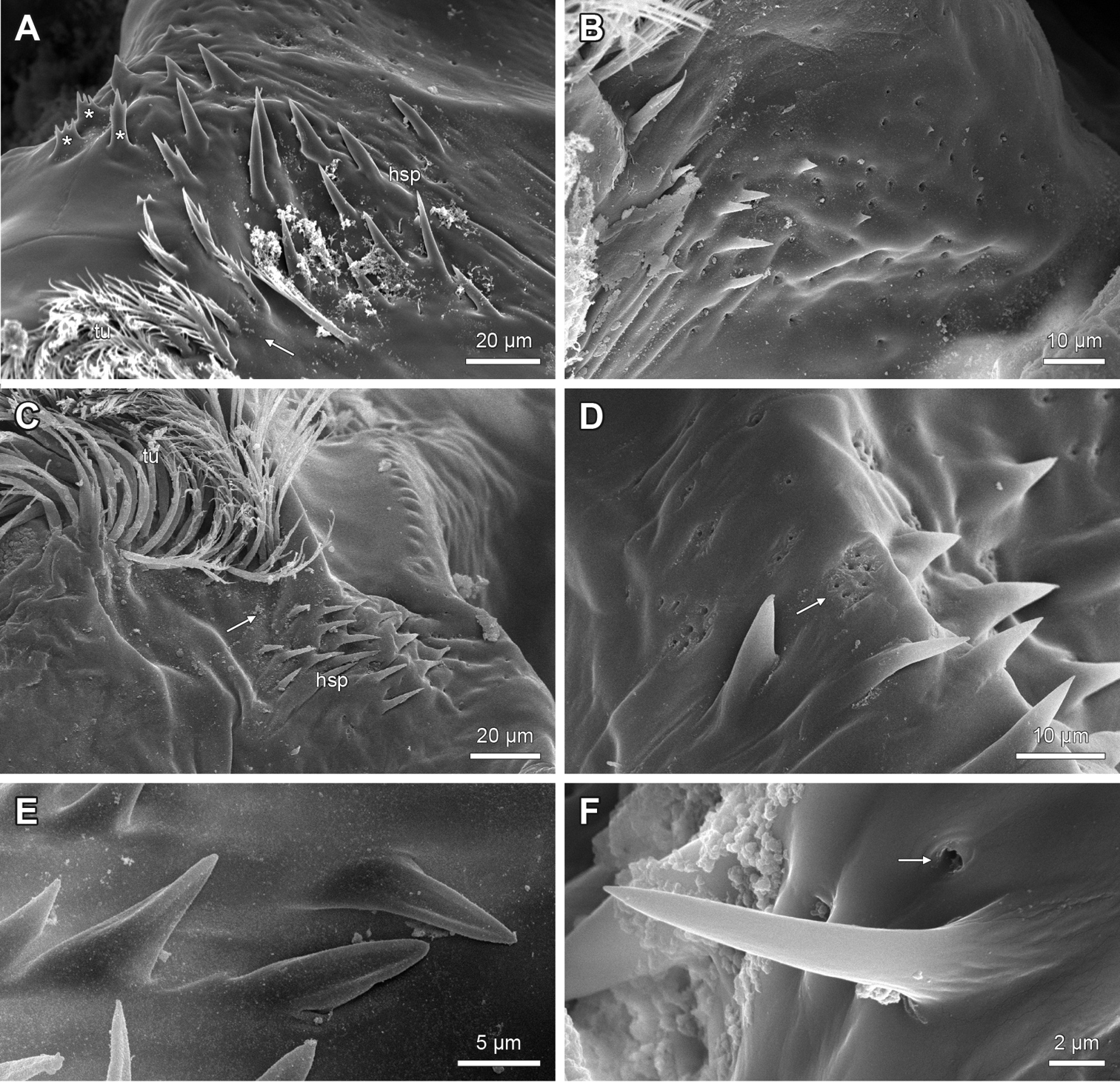
|
||
|
Examples of number and shape of the hypopharyngeal spines and surrounding pores of Lithobiidae. AEupolybothrus (Eupolybothrus) grossipes; several tapering spines with trifurcate spines (asterisks) in between and a continuous transition to the tuft area (arrow) BLithobius (Lithobius) agilis; few short tapering spines; several single pores CLithobius (Lithobius) muticus; long and tapering spines; distinct break (arrow) between hypopharyngeal spine field and branching bristles of tuft DLithobius (Lithobius) validus; hypopharyngeal spines surrounded by cluster of up to six pores (arrow) ELithobius (Lithobius) cyrtopus; flattened and ridged spines FLithobius (Lithobius) castaneus; detail of a long tapering spine close to a single pore (arrow). hsp – hypopharyngeal spine field, tu – tuft of bristles. |